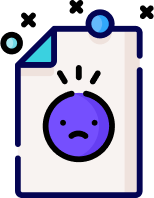

UI/UX Design
UI/UX design encompasses a wide range of skills and knowledge that can be valuable in various professional contexts. Here are some of the key things you can learn from UI/UX design:
1. User-Centered Design: UI/UX design teaches you to prioritize the needs and preferences of end users, fostering a user-centered approach to product development.
2. Visual Design: UI/UX design involves creating visually appealing interfaces, teaching you principles of layout, color theory, typography, and graphic design.
3. Interaction Design: UI/UX design focuses on designing intuitive and interactive user interfaces, helping you understand how users interact with digital products and devices.
4. Information Architecture: UI/UX design teaches you to organize and structure information in a way that is logical and accessible to users, improving the overall user experience.
5. Prototyping and Wireframing: UI/UX design involves creating prototypes and wireframes to visualize and test designs, providing practical experience in rapid iteration and feedback-driven design.
6. User Research and Testing: UI/UX design emphasizes conducting user research and usability testing to gather insights and validate design decisions, fostering skills in qualitative and quantitative research methods.
7. Accessibility and Inclusive Design: UI/UX design teaches you to consider the needs of diverse user groups, including those with disabilities, and design products that are accessible to all users.
8. Design Thinking: UI/UX design encourages a human-centered and iterative approach to problem-solving, fostering skills in empathy, ideation, prototyping, and testing.
9. Collaboration and Communication: UI/UX design often involves working closely with cross-functional teams, such as developers, product managers, and stakeholders, honing skills in collaboration and effective communication.
10. Business Understanding: UI/UX design provides insights into business goals, market research, and product strategy, helping you understand the intersection of design and business objectives.
11. Mobile and Responsive Design: UI/UX design teaches you to create interfaces that are optimized for various devices and screen sizes, addressing the challenges of mobile and responsive design.
12. Trend Awareness: UI/UX design exposes you to emerging design trends, technology advancements, and industry best practices, fostering adaptability and a continuous learning mindset.
Overall, UI/UX design offers a holistic learning experience that encompasses creative, technical, and user-centric skills, making it a valuable discipline for those interested in design, technology, and user experience.
Course description
Module 1: Introduction to UI/UX Design
1. Overview of UI/UX Design
· Definition and importance of UI/UX design
· The role of UI/UX in product development
2. User-Centered Design Principles
· Understanding user-centered design
· Principles of usability and accessibility
3. The Design Thinking Process
· Introduction to design thinking
· Applying design thinking to UI/UX
Module 2: User Research and Personas
1. Conducting User Research
· Methods for gathering user data (surveys, interviews, observations)
· Analyzing and interpreting user research
2. Creating User Personas
· Developing user personas based on research
· Persona-driven design decisions
Module 3: Information Architecture and
Wireframing
1. Information Architecture
· Organizing information for optimal user understanding
· Sitemaps and user flow diagrams
2. Wireframing and Prototyping
· Tools for creating wireframes (e.g., Sketch, Figma)
· Prototyping principles and best practices
Module 4: Visual Design Principles
1. Color Theory and Typography
· The impact of color on user experience
· Choosing and pairing fonts effectively
2. Visual Hierarchy and Layout
· Creating a visually appealing hierarchy
· Layout principles for different screen sizes
Module 5: Interaction Design
1. Principles of Interaction Design
· Defining interactive elements and behaviors
· Microinteractions and feedback
2. Animation in UI/UX
· Using animation to enhance user experience
· Best practices for subtle animations
Module 6: UI Design Tools
1. Introduction to UI Design Tools
· Overview of popular UI design tools (e.g., Adobe XD, Sketch, Figma)
· Practical exercises using design tools
2. Collaborative Design
· Collaborating on design projects using cloud-based tools
· Version control for design files
Module 7: Usability Testing and Feedback
1. Planning and Conducting Usability Tests
· Defining test objectives and scenarios
· Collecting and analyzing usability feedback
2. Iterative Design Process
· Incorporating user feedback into the design
· Revising and improving the UI based on testing
Module 8: Responsive and Adaptive Design
1. Responsive Web Design
· Designing for different screen sizes
· Mobile-first design principles
2. Adaptive Design for Multiple Devices
· Strategies for optimizing UI for various devices
· Design considerations for mobile, tablet, and desktop
Module 9: Accessibility in UI/UX Design
1. Principles of Accessibility
· Designing for users with disabilities
· Accessibility standards and guidelines
2. Inclusive Design Practices
· Creating interfaces that are accessible to all users
· Testing for accessibility
Module 10: Final Project and Portfolio
1. UI/UX Design Capstone Project
· Applying learned principles to a comprehensive design project
· Building a portfolio showcasing completed projects
Additional Considerations:
· Mentorship and Support
· Provide mentorship sessions and support for students throughout the course.
· Soft Skills and Professional Development
· Incorporate sessions on soft skills, teamwork, and effective communication.
· Career Guidance
· Offer career guidance, resume workshops, and portfolio review sessions.

0 Reviews
Laudantium iure aut
